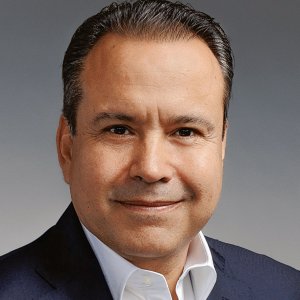Fostering Private Participation in Energy Matrix

STORY INLINE POST
Q: What are the priorities of the Energy Regulatory Comission (CRE) in terms of developing Mexico’s energy mix and positioning the sector as a driver of economic growth?
A: CRE works under the mandate of making the energy industry more efficient. Although demand is increasing, there is another mandate which dictates that clean energy sources should be incorporated into the energy mix. We see this as a business opportunity in which Mexico can invest in equipment manufacturing, engineering firms, construction companies, or any other area related to the industry. The changes made to the Electric Energy Public Service Law (LSPEE) were intended to reduce the amount of public resources invested in the energy sector. Public education and the power sector should not compete for resources. This is also the reason why private parties, currently responsible for 45% of national power production, were allowed to participate in energy generation.
It is not wise to hinge the well-being of an entire country on a single energy source. Incorporating renewable energy sources into the energy mix is a clear sign of diversification, which is the right path for Mexico at the moment. An advantage of renewable energy sources is that we can calculate costs from the day the generator is chosen until the last day of the equipment’s working life, the source itself has no cost, unlike oil or gas. Another asset is that the renewable energy industry is growing fast enough for costs to drop, which makes projects more competitive.
Q: How does CRE facilitate private participation in the Mexican energy sector?
A: CRE establishes a set of rules which are examined by potential investors, who then decide if they want to participate or not. We ensure equity by setting rules. The private sector’s involvement in renewable energy production works because it is a profitable enterprise. Unlike many other countries, Mexico does not subsidize power from renewable sources. This decision meant that projects were not going to be developed until technology costs were low enough to be competitive in Mexico. However, there are plenty of regulated incentives aimed at leveling market conditions for renewable energy with traditional sources. Previously, renewable energy sources were also not economically viable because of their intermittent nature. This problem was solved once the energy bank was created. Nowadays, most technologies can enter the domestic market and compete with CFE’s tariffs.
Q: What are the achievements and shortcomings of the Renewable Energy Use and Energy Transition Financing Law?
A: We began working with renewable energy sources before this law was passed, which was quite difficult as duties were not assigned. There is much more clarity now and the legislation made us create rules to facilitate investment. The transparency that resulted from these laws is one of the biggest achievements for the renewable energy sector. However, this legal framework does not foster competitiveness.
Q: What schemes similar to the Open Season could facilitate private participation in the expansion of transmission infrastructure?
A: In every other country, private actors pay for the infrastructure they need to connect to the grid. Open Season is a great option because many companies collaborate and build the infrastructure instead of a single company assuming the total costs. The second Open Season in Oaxaca consists of an 800km transmission line and there are no other projects currently capable of matching this capacity. This was only made possible in Oaxaca by gathering several developers. Private projects should be paid for by private parties.
Q: Which international best practices could Mexico adopt to make renewable energy sources more competitive?
A: We are working on a bidding scheme in which CFE will grant small producers throughout the country long-term contracts for renewable energy projects up to 30MW. Large projects only allow large companies to participate. These 30MW projects will enable Mexican entrepreneurs to enter the sector by manufacturing, building, operating, and maintaining small energy plants, which also create jobs. Additionally, this will allow CFE to focus on large projects.
The next step should be a booming solar energy industry. Mexico has a greater solar resource than Germany.






















